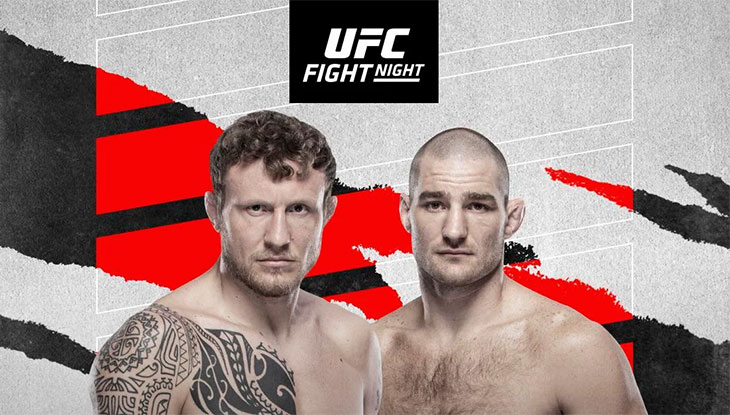When you look at the journey the UFC has enjoyed, it’s clear that the sport of mixed martial arts is now one of the fastest-growing in the world. Despite only recently being picked up by mainstream television, the UFC has undoubtedly been able to establish itself over the years due to the technology known as live streaming. Now featured on major television networks such as Fox Sports and BT Sports, MMA is now enjoying viewing figures well in the millions. But even though MMA can be found on major television networks, live streaming is still integral to the sport, and something the world’s biggest fight promotions have embraced.
From the 86,000 people that bought the pay-per-view for UFC 1 to the 1.3 million fans that paid to watch Conor McGregor become a two-weight world champion at UFC 205, MMA’s number one promotion is now classed as one of the 15 most popular sports in the world. With a passionate and growing fanbase from all four corners of the globe, the universal attraction to fighting has seen the sport go from a somewhat cult subculture to something that is now being embraced by the mainstream.
The Early Years
The size and pull of the UFC was highlighted last year by the promotion being sold to talent agency WME-IMG for a colossal $4.2 billion, 15 years after 2001, when the Fertitta brothers – alongside Dana White – bought the company for $2 million. The sale saw the UFC become the most expensive sports franchise ever sold, only topped at the start of 2017 when the Liberty Media Group paid $8 billion to acquire Formula One. Now a major player in the world of viewing figures, the UFC have placed a large focus on live streaming in order to fulfill the huge global appetite for mixed martial arts.
The early years of mixed martial arts bear very little resemblance to today’s UFC events. And it’s perhaps no surprise that the sport was shunned by mainstream media and television at the time. The pay-per-view events, starting in 1993 with UFC 1, saw viewing figures grow from 86,000 to 300,000 for UFC 2, with the fights then being sold on VHS. Failing to attract any mainstream media coverage, these viewing figures soon dropped, forcing the UFC’s owners to sell the company to Dana White and the Fertitta brothers at a cut price cost in 2001. It wasn’t until 2005, when reality television show The Ultimate Fighter was launched – attracting over 10 million viewers over the course of the season – that the UFC really exploded onto the mainstream – with 1.9 million people watching Forrest Griffin beat Stephen Bonnar live on Spike TV.
Live Streaming
More and more people move away from traditional television networks in favor of using their computers or smartphones to consume content, with Netflix alone boasting over 98 million members in 190 countries. From breaking news to live sporting events, live streaming has been responsible for a new trend of how people view content. For the likes of eSports – the fast-growing world of professional video gaming backed by brands as diverse as Coca-Cola and HTC, – more than 500 million use live streaming services such as Twitch to watch events. Live streaming has also played a significant role in the increase in popularity of online casinos – an industry worth almost $30 billion in the U.S. alone. At online casinos such as Betway, live streaming means a new way to play, with players receiving streams of remote locations, where croupiers and dealers will serve them in casino games like roulette and blackjack. Even the app markets of Google Play and the App Store are testament to the popularity of live streaming tech, with Twitter-owned Periscope app and Facebook Live allowing amateurs to join the streaming revolution by streaming their life and activities.
This is where live streaming and MMA meet. The emergence of the live streaming phenomenon was the real catalyst for the UFC to truly embrace the technology. The UFC realised that there were millions of potential viewers around the world who didn’t have access to television channels that broadcasted the matches locally, so they went on to launch their Fight Pass service – where events were live streamed. Following in the footsteps of the WWE Network, which live streams pay-per-view events, the UFC’s Fight Pass service has played a major role in revolutionizing the sport of mixed martial arts.
From the Bottom to the Top
Despite owning all the rights to a huge fight library covering over 25 years and multiple promotions, the UFC had no way of allowing fans to access this memorable events. One of the reasons behind the launch of Fight Pass in December of 2013 was to make use of this historic collection of mixed martial arts’ greatest fights. The other reason was to offer a professional live streaming service for fans of the UFC around the globe. From pay-per-view events to specific fight cards shown exclusively on the platform, Fight Pass has shaken off some early cobwebs to now become a crucial part of how the UFC promotes and broadcasts its events.
One of the most important recent moves the UFC have made in terms of their Fight Pass platform has been to purchase the rights to show a number of smaller promotions from around the world. From the women’s only promotion Invicta to European-based promotions such as Cage Warriors, Fight Pass is now being used to provide the next generation of athletes a platform on which to show their skills. And it isn’t just MMA, with Fight Pass also showing kickboxing events from major promotions such as Glory and grappling tournaments from EBI.







Stay Connected